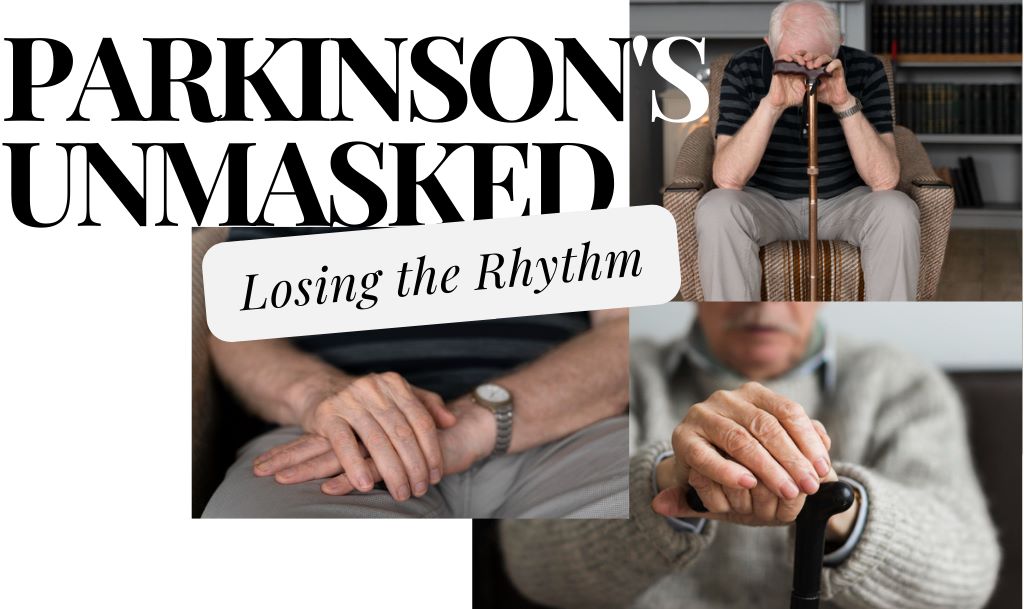
Image by Freepik

Understanding Parkinson’s: The Brain Behind the Movement Slowdown
Parkinson’s disease can be a confusing condition. Tremors, stiffness, and slow movement are all telltale signs, but what’s happening inside the brain to cause these symptoms? It all boils down to a vital chemical messenger called dopamine, and a delicate balancing act deep within your brain.
The Dopamine Dance in the Basal Ganglia
Imagine your brain as a grand dance floor. The basal ganglia, a cluster of structures deep inside, acts as the movement control center. Here, two key pathways, the direct and indirect pathways, work together to regulate how you move. They use excitatory and inhibitory signals, like a conductor’s cues, to tell your muscles what to do.
Dopamine, produced by nerve cells in an area called the substantia nigra, plays a starring role in this dance. It acts like fuel for the direct pathway, pushing it to initiate and smoothly coordinate movements. But in Parkinson’s disease, these dopamine-producing cells start to deteriorate.
Losing the Rhythm: How Dopamine Decline Leads to Symptoms
With less dopamine around, the direct pathway loses its oomph. This throws the whole dance out of rhythm. The indirect pathway, normally kept in check by dopamine, becomes overactive. This excessive inhibition puts a damper on movement, leading to the core symptoms of Parkinson’s:
- Bradykinesia: Slowness of movement, making even simple tasks feel like a struggle.
- Rigidity: Muscles become stiff and inflexible, affecting posture and balance.
Tremors, Shuffling, and Beyond: The Many Faces of Parkinson’s
While tremors are often the first image that comes to mind with Parkinson’s, the disease can manifest in other ways too. Shuffling gait, where steps become small and hesitant, is another common symptom. Some people may also experience cognitive decline, affecting memory and thinking abilities.
Pinpointing the Culprit and Managing the Moves
Unfortunately, the exact reasons why nerve cells in the substantia nigra degenerate are still under investigation. Genetics and environmental factors seem to play a role, but the exact recipe for the disease remains a puzzle.
Diagnosing Parkinson’s often relies on a doctor’s evaluation, observing movement patterns, and discussing symptoms. There’s no single definitive test, but new criteria help doctors identify the disease based on specific signs.
Treatment: Aimed at Getting You Back on the Dance Floor
There’s currently no cure for Parkinson’s, but treatment focuses on managing symptoms and improving quality of life. Medications play a crucial role, with drugs like levodopa acting as a precursor to dopamine, boosting its levels in the brain.
A Balancing Act: Medication and the On-Off Phenomenon
However, long-term use of levodopa comes with its challenges. The medication’s effectiveness can wear off over time, leading to an “on-off” phenomenon. This means periods of good control can be interrupted by times when symptoms return.
Dyskinesia: The Involuntary Jig
Another potential side effect of Parkinson’s medication, particularly levodopa, is dyskinesia. These are involuntary movements that can be jerky or twisting. It’s a balancing act – finding the right medication dosage to manage symptoms without triggering these unwanted movements.
Parkinson’s disease research is constantly evolving, with scientists exploring new therapies like deep brain stimulation. While the cause of the disease may still be a mystery, understanding the role of dopamine and the intricate dance within the brain paves the way for better treatments and a brighter future for people living with Parkinson’s.




